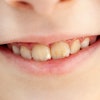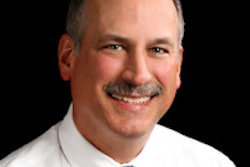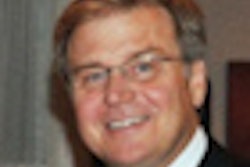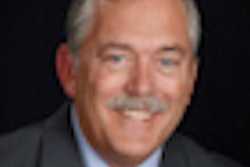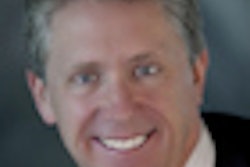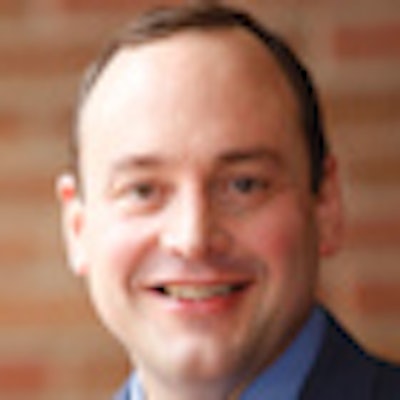
DrBicuspid.com is pleased to present the next installment of Leaders in Dentistry, a series of interviews with researchers, practitioners, and opinion leaders who are influencing the practice of dentistry.
We spoke with Joel Berg, DDS, chair of the Department of Pediatric Dentistry at the University of Washington (UW), dental director at Seattle Children's Hospital, and associate dean for Hospital Affairs at the University of Washington School of Dentistry. Previously he has held executive positions at Philips Oral Healthcare and ESPE Dental. He will also assume the role of president at the American Academy for Pediatric Dentistry (AAPD) in May during the organization's annual meeting.
 Joel Berg, DDS
Joel Berg, DDS
A pediatric dentist for nearly 27 years, Dr. Berg shared his thoughts on how to tackle one of the biggest challenges facing dentistry and the greater medical community -- childhood caries -- and what he sees for the future of pediatric dentistry.
DrBicuspid: What is the focus of your current role at UW's School of Dentistry?
Dr. Berg: I worked for both a professional products manufacturer and a consumer products manufacturer, so I've seen those elements of the dental business. But I'm happy to now, after nine years, be back in academics where I intend to stay.
At UW we've partnered with Seattle Children's Hospital on the Center for Pediatric Dentistry, a new entity we created a little over a year ago. It provides patient care, research, and policy development for matters related to children's oral health.
I've been thrilled to have the chance to pull together experts in pediatric dentistry and primary care doctors in an environment where we have sub-specialists that include oral surgeons, endodontists, periodontists, and others who can provide specialty care for children.
Is the role of pediatric dentistry changing?
The field is a thriving, expanding specialty of dentistry. It's an area of great importance, particularly given our awareness that dental caries rates in young children have gone up in recent decades, whereas in other ages rates have declined or stayed the same. So there's a tremendous amount of work to be done to educate all kinds of stakeholders, from parents to colleagues in medicine who play a very important role in screening children as part of their "well baby" checkups for dental disease and handing the referral to a dentist.
The expansion is evidenced by the growing interest in our field for post-graduate training. Among all the specialties, the one where the number of applicants as a ratio to positions is growing the most is pediatric dentistry. More and more people are seeking the specialty, and it's getting harder and harder for us to pick people. We have an incredible pool of applicants all around the U.S. every year vying for the relatively small number of positions -- around 350 slots.
What are the goals of the Center for Pediatric Dentistry?
Our goal is to care for more children, but we can only care for a limited number ourselves. We have a capacity at the center of around 40,000 patient visits per year, but that's a relative drop in the bucket for the true need. Our real goal is to learn how to provide better quality and more efficient care to more children, and then show others how that is done. That's consistent with the goals of the AAPD.
“The future of risk assessment is going to be technology-based.”
— Joel Berg, DDS
A lot of what we have to do is education, and it starts with parents -- educating everyone that oral health starts when the first teeth come into the mouth. Really, that's the only chance you have to set the stage forever for that patient's life. That's why I would argue that there's nothing more important than the age 1 dental visit. Because if we could get all children screened and assessed for risk and manage them appropriately, we can prevent a significant amount of dental disease for the rest of their life. They should start earlier than we normally have done it.
How does dentistry send that message to parents?
There are a number of methods we need to employ. We speak with our patients in one method, but that only reaches the ones already coming in. We need to reach out to our colleagues in medicine. Whereas most children see their primary care physician for their "well baby" check-ups, and their parents know they have to take them at various times for immunizations, etc., we need to get the pediatricians and family physicians in line with us to make oral health part of their messaging. We also need to do some assessment of the child's risk as part of a total health risk assessment, because that's what a primary care doctor does: assess the risk of a baby for various conditions.
We held a conference in Seattle last July specifically on this subject. We brought together dentists, pediatric dentists, pediatricians, and oral health experts from a variety of viewpoints for a symposium on how to achieve coherence in getting these children to get access to good oral care. A paper was just published in Clinical Pediatrics that talks about the symposium's proceedings.
The medical doctors are a big part, of course, and it's great to see various entities getting together to work on various messaging through major media outlets. It's also good to partner with industry because industry has a reach to consumers. They have an interest in getting their products out, and consistent with those products is good oral health messaging that we can work on together.
Physicians need to be educated to assess oral disease to the same extent as they can other parts of the body. I think we're going to see pharmacists and nurses doing more about how to spread the word and others who can educate patients about the need for good oral health, and that's going to improve everybody's oral health significantly.
I think you're going to see an exponential growth of awareness over the next few years because there's a deficit of it right now. But there are so many parties aligning now toward getting the message out that I think we're going to see some big improvement over the next few years.
What role do CAMBRA (caries management by risk assessment) and CRA (caries risk assessment) play in pediatric dentistry?
There is a trend toward early intervention, at least an awareness of the need to assess risk and treat patients based on their risk level. The problem has been that most of the risk-assessment tools, which are historical and environmental in nature, aren't specific enough yet. They elicit too many people deemed to be at high risk.
I believe the future of risk assessment is going to be technology-based. There are going to be a lot of devices -- and we're working on various possible technologies to achieve this at the center -- that will be employed either in the dentist's office or in the pediatrician's office, since they see the child more often, that a nurse could use to scan the teeth of a baby. Even at age 1, where the six teeth that are likely there look perfect, this device could actually scan for and see the earliest stages of the disease before you could ever see it clinically. We could prevent the need for significant intervention about a year later.
Although we do have these devices today, they are very sensitive but not terribly specific. In other words, they elicit a lot of false positives, which is not a bad thing, but if you're trying to differentiate who to treat more aggressively first, you really want to know exactly who is at the highest risk.
What areas of the profession do you intend to focus on when you become president of the AAPD in May?
The AAPD has regular connection with the American Academy of Pediatrics, and our officers meet with theirs on a regular basis to discuss matters related to children's oral health. My plans for organizational development include continuing to grow the interfaces the AAPD has with international pediatric dentistry organizations. Given the growth of the early childhood caries crises worldwide, we need to spread the word about the preventable nature of early childhood caries with a common voice.



